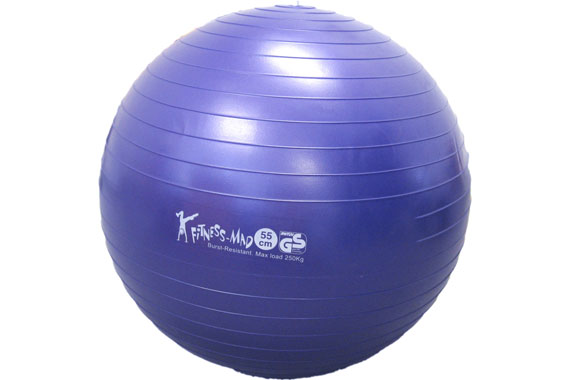Swiss Balls may have only come onto the exercise market in recent years, but Swiss Balls have been around for over 40 years and are used by physios all over the world.
Many people refer to Swiss Balls as Stability Balls among other names*, but as long as it is burst resistant it makes no difference which name you chose to call them as they are all designed for the same purpose.
By adding weight to a Swiss Ball (i.e. sitting on it etc...) it makes it unstable, your natural reflexes then use what is known as your core muscles to keep your balance. This is why using a Swiss Ball is a better platform for doing many exercises on, rather than using a stationary one like the floor.
Swiss Balls are ideal for use when doing general exercise such as strength and resistance training, as well as circuits, physiotherapy, pilates, rehabilitation and yoga either at home or in a gym environment. They are even used for sitting on at work.
Inflating Swiss/Stability Balls
When inflated to it’s correct diameter a Swiss Balls should be firm, but not hard. When in use the Swiss Ball then responds to the shape of your body giving support where it is needed and improving posture.
When inflating a Swiss Ball for the first time you should inflate it to 70% and then leave over night before fully inflating to the correct diameter.
Our Tip:
When purchasing a Swiss Ball as a seat, it is a good idea to buy a larger size than the one you need so you can slightly deflate the ball for greater comfort.
*Swiss Balls are also known as balance ball, body ball, duraball, exercise ball, fit ball, fitness ball, gym ball, physio ball or stability ball.



